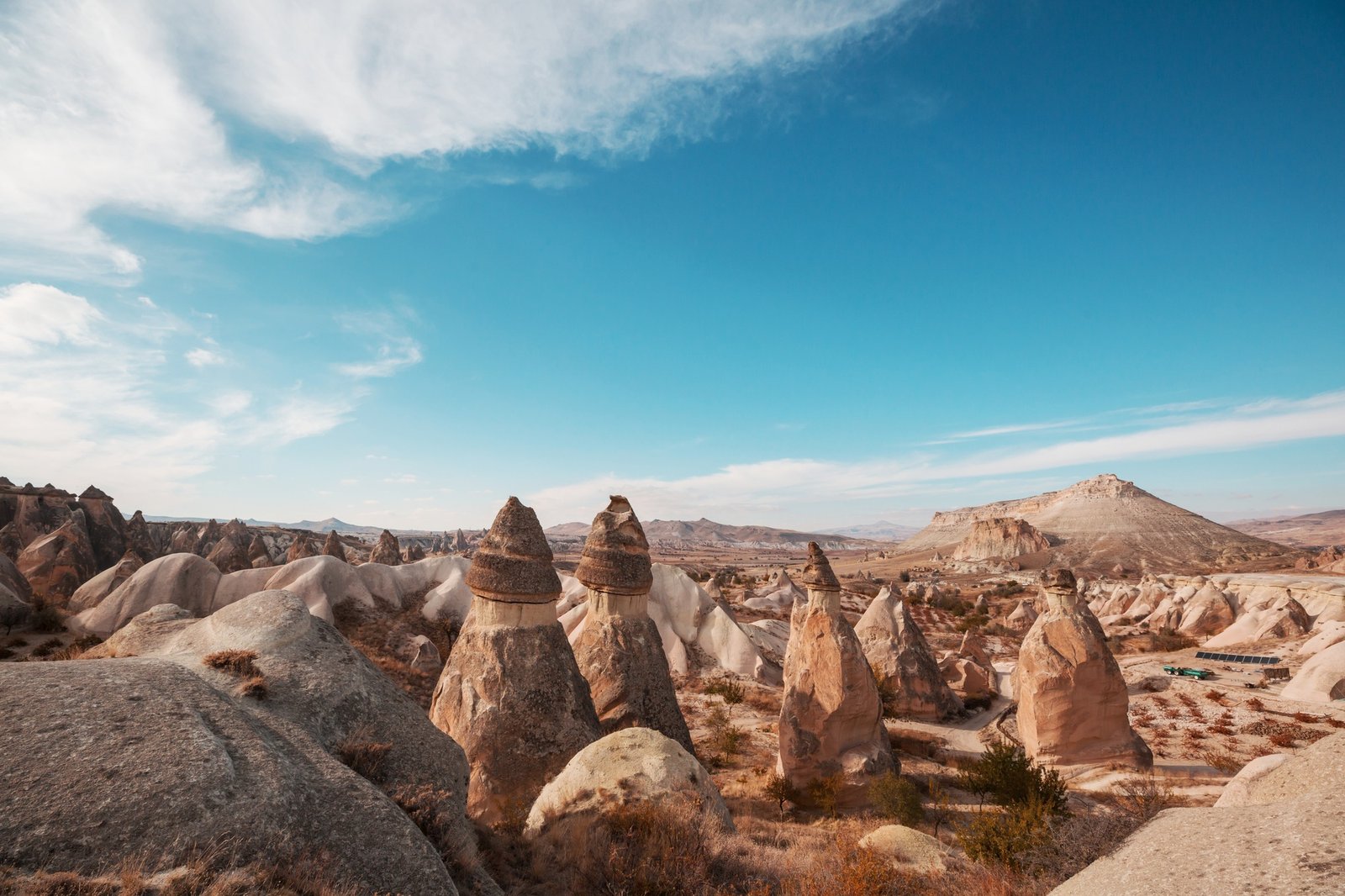Cappadocia, a region renowned for its otherworldly landscapes, is equally celebrated for its rich history. Among its most remarkable treasures is the Byzantine heritage that still resonates in its ancient churches, rock-cut monasteries, and religious art. For history enthusiasts, travelers, and culture seekers alike, tracing the Byzantine heritage in Cappadocia offers a captivating glimpse into the lives, faith, and artistry of the early Christian world.
This post will guide you through the key aspects of Cappadocia’s Byzantine influence, including its architecture, religious significance, and must-visit locations.
The Byzantine Heritage in Cappadocia
The Byzantine Empire left an indelible mark on Cappadocia, transforming it into a center for early Christian worship. Between the 4th and 14th centuries, this region served as a sanctuary for Christian monks, clergy, and communities seeking refuge from external threats.
Carved directly into Cappadocia’s volcanic rock formations, countless monasteries, churches, and chapels provide a window into the role of faith under Byzantine rule. Inside their walls, vivid frescoes and inscriptions still tell stories of devotion, persecution, and survival. Surrounded by honeycomb-like dwellings and otherworldly natural landscapes, these relics of faith offer a profound connection to Byzantine religious roots.
Why Cappadocia Became a Byzantine Christian Hub
Cappadocia played a pivotal role during the early Byzantine period due to several factors, including its geography and strategic position.
Refuge During Troubled Times
Cappadocia’s unique topography, with its soft volcanic rock, made it ideal for carving hideouts and places of worship. When Christians faced persecution or invasions by Arab armies, they sought refuge in the region’s underground cities and blended seamlessly into its caves and valleys. These structures provided safety while also facilitating the growth of monasticism in isolation.
Spiritual Significance
The Cappadocian Fathers—Saint Basil the Great, Saint Gregory of Nyssa, and Saint Gregory Nazianzus—left a profound theological and spiritual imprint on Christianity. Their influence in shaping Christian thought further solidified Cappadocia’s reputation as a sacred space for worship and learning in the Byzantine Empire.
Architectural Achievements
The region pioneered unique architectural techniques, with entire church complexes hewn out of the soft volcanic rock. These magnificent rock formations doubled as watchtowers and monasteries, blending natural beauty with practical functionality.
Must-Visit Locations to Explore Byzantine Heritage in Cappadocia
Cappadocia is dotted with sites teeming with Byzantine legacy. These destinations illuminate Cappadocia’s evolution as a religious haven.
1. Göreme Open-Air Museum
Undoubtedly one of the most popular landmarks, the Göreme Open-Air Museum is a UNESCO World Heritage Site and a must-visit for anyone wanting to explore Byzantine religious roots. This vast monastic complex is home to chapels, rock-cut monasteries, and churches adorned with frescoes depicting Bible stories and saints.
Highlights include the Dark Church (Karanlık Kilise), known for its well-preserved frescoes, and the Apple Church (Elmali Kilise), with its warm tones and subtle detailing. These sites provide a glimpse into both everyday monastic life and artistic excellence during the Byzantine period.
2. The Underground Cities of Derinkuyu and Kaymakli
The underground cities of Derinkuyu and Kaymakli were carved deep into the earth and served as sanctuaries for early Christians during invasions. Derinkuyu, with its staggering 18 levels, is particularly notable. Both cities feature chapels, storage rooms, and ventilation systems that allowed entire communities to live safely underground for long stretches.
3. Ihlara Valley
Often referred to as a “miniature Eden,” the Ihlara Valley is home to rock-cut churches nestled along cliffs that overlook the Melendiz River. With its lush greenery and serene environment, it’s easy to imagine why monks sought refuge here for spiritual solace. Notable churches in the valley include Ağaçaltı Church (Church of St. Daniel) and Pürenliseki Church, both decorated with biblical frescoes that echo Byzantine artistry.
4. Çavuşin Church
The Çavuşin Church, also known as the Church of Saint John the Baptist, stands out thanks to its size and unique layout. This 5th-century structure is one of Cappadocia’s largest rock-hewn churches and offers sweeping views of the surrounding landscape.
5. Tokalı Church
The Tokalı Church (Buckle Church) is just a short walk from the Göreme Open-Air Museum. It is Cappadocia’s largest cave church and one of its most beautiful. Layers of frescoes, including striking blue tones, illustrate scenes from the life of Jesus with intricate details that bring biblical stories to life.
What Makes Cappadocia’s Byzantine Heritage Special?
The combination of Cappadocia’s natural formations and its religious significance make its Byzantine heritage truly unparalleled. Travelers venture here not only to explore ancient churches but to experience their connection to history.
Cappadocia offers insights into how faith thrived under the most challenging circumstances. Its frescoes provide a historical timeline of art, theology, and resilience, revealing how early Christians used creativity and innovation to preserve their beliefs.
Beyond the physical artifacts, Cappadocia’s Byzantine heritage is a reminder of humanity’s enduring ability to seek beauty and meaning even in times of adversity.
Practical Tips for Visitors
- Timing: Visit Cappadocia between April and October for the best weather conditions.
- Guides: Consider hiring a knowledgeable guide familiar with Byzantine history to truly appreciate the symbolism in the frescoes.
- Respect: Many of the sites are sacred among Christian communities—be mindful of your behavior while exploring these spaces.
Discovering Byzantine Heritage in Cappadocia
Exploring the Byzantine heritage in Cappadocia is more than a trip; it’s a step back in time. It immerses you in the history of faith, artistic achievement, and resilience. From breathtaking frescoes to ancient underground cities, Cappadocia tells a story that transcends centuries and sparks admiration for its early inhabitants.
If you’re planning a visit, be ready to walk through a mesmerizing chapter of human history. Cappadocia’s relics not only narrate the significance of the Byzantine Empire but also leave every traveler with a sense of wonder about the resilience of spiritual devotion.
